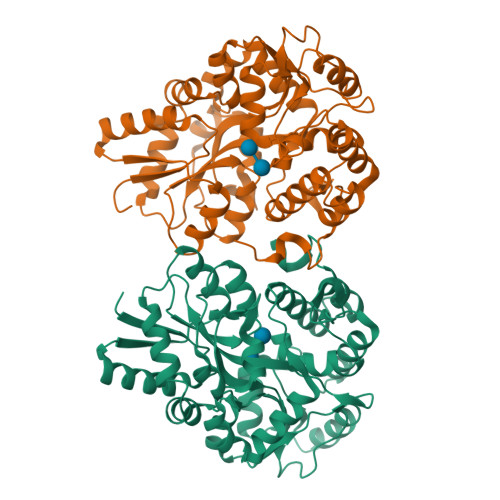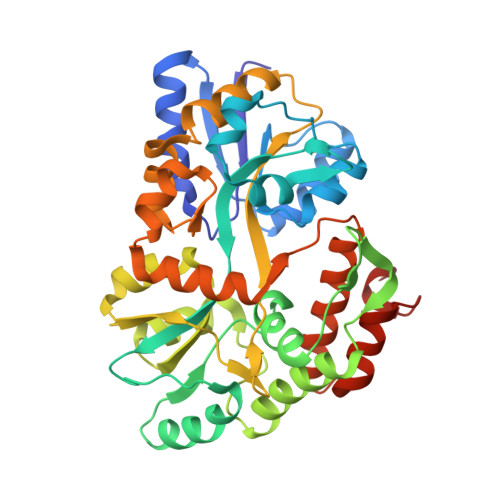Structural analysis of the intracellular domain of (pro)renin receptor fused to maltose-binding protein.
Zhang, Y., Gao, X., Michael Garavito, R.(2011) Biochem Biophys Res Commun 407: 674-679
- PubMed: 21420935
- DOI: https://doi.org/10.1016/j.bbrc.2011.03.074
- Primary Citation of Related Structures:
3LBS, 3LC8 - PubMed Abstract:
The (pro)renin receptor (PRR) is an important component of the renin-angiotensin system (RAS), which regulates blood pressure and cardiovascular function. The integral membrane protein PRR contains a large extracellular domain (∼310 amino acids), a single transmembrane domain (∼20 amino acids) and an intracellular domain (∼19 amino acids). Although short, the intracellular (IC) domain of the PRR has functionally important roles in a number of signal transduction pathways activated by (pro)renin binding. Meanwhile, together with the transmembrane domain and a small portion of the extracellular domain (∼30 amino acids), the IC domain is also involved in assembly of V(0) portion of the vacuolar proton-translocating ATPase (V-ATPase). To better understand structural and multifunctional roles of the PRR-IC, we report the crystal structure of the PRR-IC domain as maltose-binding protein (MBP) fusion proteins at 2.0Å (maltose-free) and 2.15Å (maltose-bound). In the two separate crystal forms having significantly different unit-cell dimensions and molecular packing, MBP-PRR-IC fusion protein was found to be a dimer, which is different with the natural monomer of native MBP. The PRR-IC domain appears as a relatively flexible loop and is responsible for the dimerization of MBP fusion protein. Residues in the PRR-IC domain, particularly two tyrosines, dominate the intermonomer interactions, suggesting a role for the PRR-IC domain in protein oligomerization.
Organizational Affiliation:
Department of Biochemistry and Molecular Biology, Michigan State University, East Lansing, MI 48824-1319, USA.




















